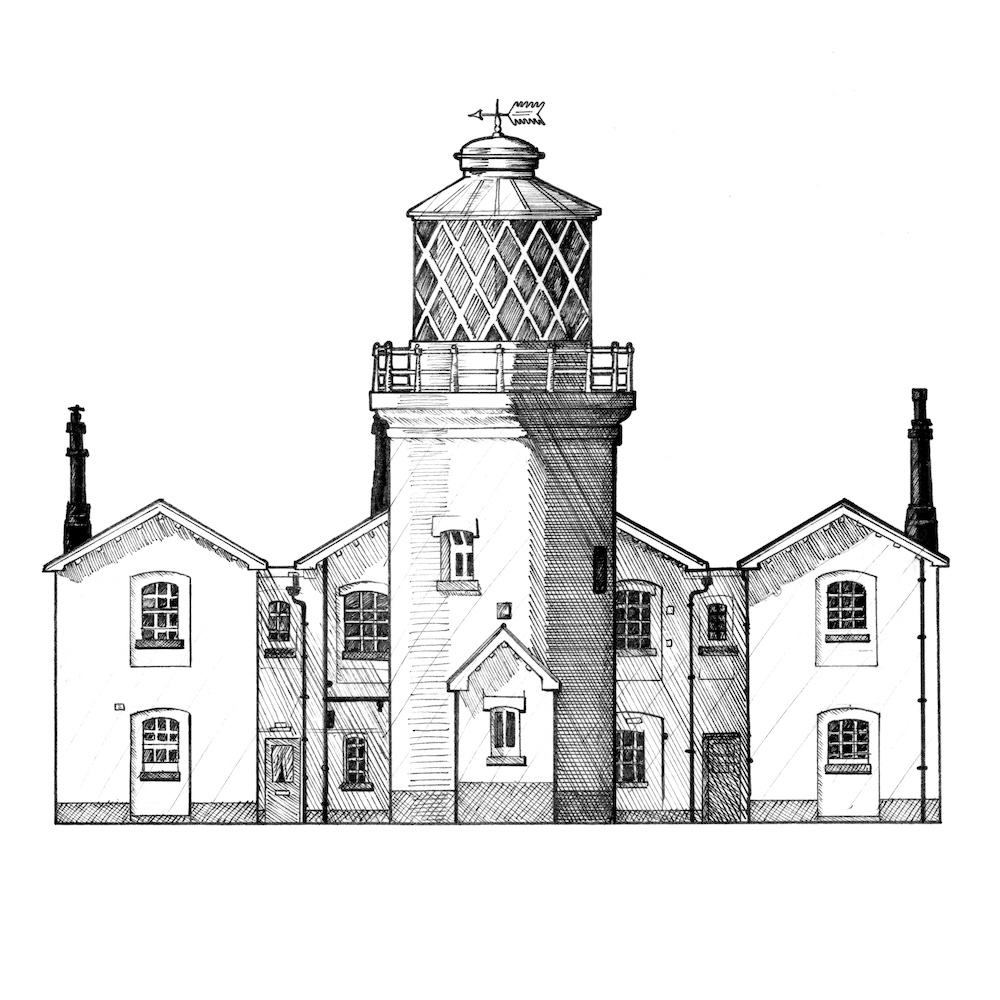Continuing his quest to document the UK’s lighthouses, Ben Langworthy reaches the most easterly point in mainland Britain.

The Lowestoft Lighthouse stands just a few hundred yards away from Ness Point, the most easterly point in mainland Britain —thus bestowing this whitewashed outpost with the title of the U.K.’s most easterly lighthouse.
The current building was completed in 1874, but there have been lighthouses here, at the furthest reach of the compass point, for centuries.
The first lighthouses in this location were built in 1609, after pleas from merchants and ship-owners whose craft had fallen foul of the various sandbanks and shoals along the eastern coast. They called for lights to aid ‘ships which crept by night in the dangerous passage betwixt Lowestoft and Winterton.’* These towers guided ships as they arrived from the sea to transverse the now long-disappeared inland waterways of the area. Such lighthouses were built in pairs, with navigators using their relative positions to plot their path. Various such ‘leading lights’ were built across this landscape over the interveneing decades, all with the same shared purpose. Wood towers gave way to brick as tallow candles gave way to coal fire, which in turn gave way to the reflected glow of oil lamps and then eventually, in the 1870s, the cool modern light of electricity — which was itself taken out of human hands and automated in the 20th century.
These past structures are all but lost to history, invisible now to the naked eye. Like the veinlike waterways, and the keepers of the light, they are mere memories; ghosts in the landscape.
The current tower, which stands 52 feet high, was one of the last generation of these leading lights. When its partner was decommissioned, its light falling dark in the 1920s, the Lowestoft Lighthouse remained. It is the lone survivor, its light a testament and a story of those that came before. The Lowestoft lighthouse still illuminates the way for mariners to this day.
*
*Quote from Trinity House